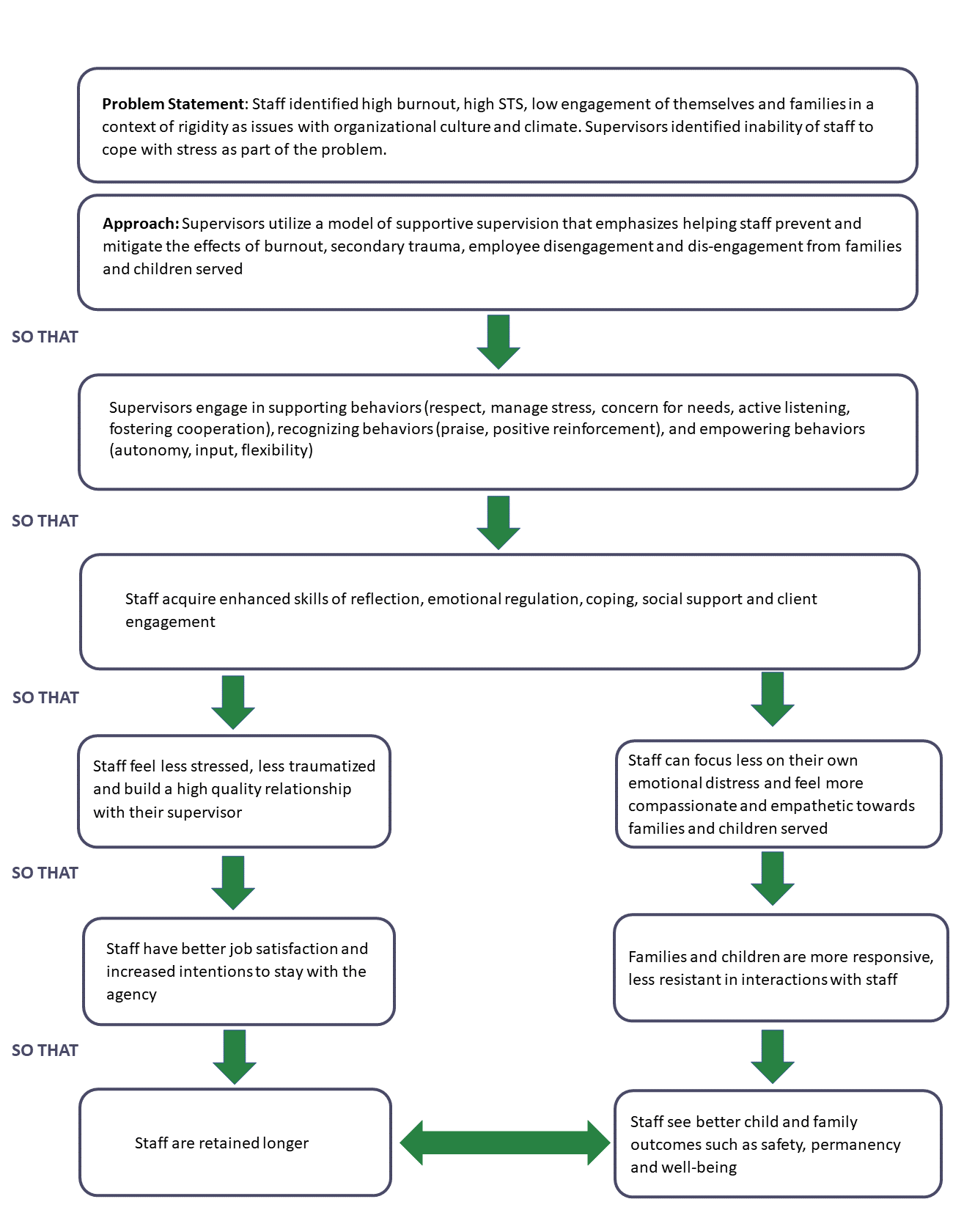Supportive Supervision and Resiliency
The Quality Improvement Center for Workforce Development (QIC-WD) developed a theory of change for the primary area of need identified in partnership with the Ohio Department of Job and Family Services and the nine participating counties. Through a series of steps and causal links, a theory of change provides a roadmap to address the root causes of an identified workforce problem and describes how and why changes are expected to lead to the desired outcomes. In Ohio, the theory was informed by various aspects of the needs assessment process (e.g., survey data, implementation team input, and focus groups with supervisors) and relevant research on the targeted workforce problems.
The theory of change associated with the selected intervention, supportive supervision and Resilience Alliance, began with a problem statement about staff burnout and secondary traumatic stress (STS); organizational rigidity and low engagement; and supervisors wanting to help staff prevent and mitigate the effects of burnout, secondary trauma and low engagement. It was felt that if supervisors engaged in supporting, recognizing, and empowering behaviors, they could help staff acquire enhanced skills such as reflection, self-regulation, coping, social support, and better client engagement. This in turn would help staff feel less stressed and traumatized and would improve their relationship with their supervisor. Staff would focus less on their own emotional distress and would be better able to focus on the needs of the families and children they serve. In turn, staff would have increased job satisfaction, leading to improved intentions to stay with the agency, and in turn, improved staff retention. In addition, by improving staff compassion and empathy for the families and children served, the families would be more responsive and less resistant which would lead to improved child and family outcomes such as safety, permanency and well-being.
The following image depicts the theory of change beginning with a problem statement followed by a series of steps that lay out the logic on how that problem will be addressed.
